Today, Asia is the largest and most populous continent, taking up about 30% of the world’s land area and containing 60% of the world’s population (and two of the world’s largest economies). But this is not Asia’s first time on the world stage; indeed, the continent has been flourishing for thousands of years. Not only was Asia home to many of the world’s first civilizations, but it was also the site of some of the most spectacular empires of the ancient world.
As such, Asia has dozens of remarkable ruins. From the iconic temples of Angkor, Cambodia to magnificent Borobudur in Indonesia, there is no shortage of crumbling beauty in Asia. Here are seven of the best ancient ruins in Asia.
Borobudur - Central Java, Indonesia
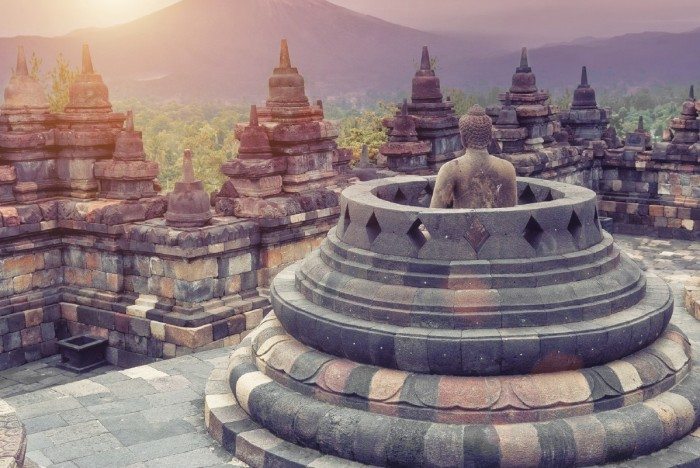
The iconic Borobudur in Magelang, Central Java, Indonesia is surely one of the best ancient ruins in Asia, if not the world as a whole. This 8th-century (yes, 8th!) Mahayana Buddhist temple complex is the single largest Buddhist structure in the world. Borobudur was built with over two million stones, and it contains more than 500 Buddha statues and almost 3,000 bas-relief sculptures depicting the life and teachings of Buddha. The scale and attention to detail are truly awe-inspiring and helped earn it a designation as a UNESCO World Heritage Site and keep it atop the list of most popular tourist attractions in Indonesia.
Borobudur is known for its beautiful bell-shaped spires, symbolic design, and its stunning surroundings, which include vibrant green jungle and rice fields, traditional villages, and volcanoes off in the distance—one of which is active.
Bagan - Mandalay Region, Myanmar
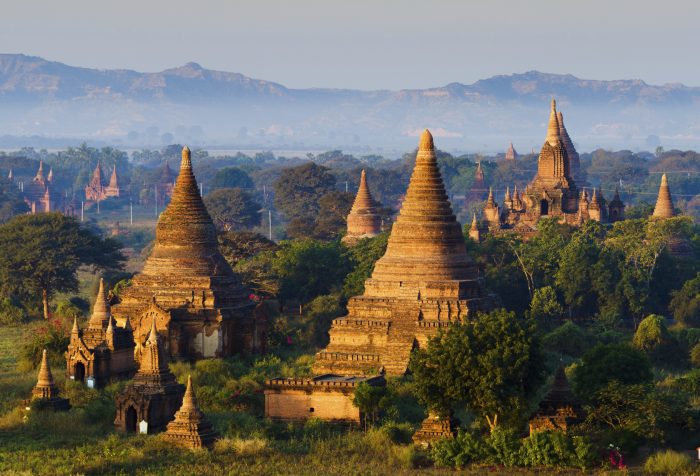
You’ve probably seen the photos: a vast, magical landscape bathed in early morning or late afternoon light, hundreds of temples dotting the land, several hot air balloons floating above them.
This is Bagan, home to the largest and densest collection of Buddhist temples, pagodas, stupas, and ruins in the world. Many were built as far back as the 11th and 12th centuries, and the design and construction of each is highly significant in Buddhism. It’s estimated that there were once as many as 13,000 temples on this plain; today, there are about 2,200. Some are still in good shape, such as the stunning, golden Ananda Pahto, while some are quite deteriorated.
All temples, pagodas, and stupas in Bagan are highly sacred, so remember to cover your shoulders and knees and remove your shoes (and socks) before stepping on or entering them.
Hampi - Karnataka, India
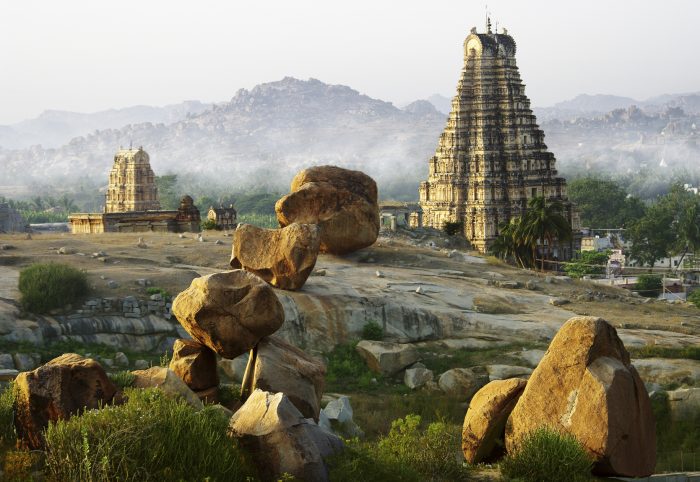
Once the capital of the Vijayanagar Empire, which ruled the Deccan Plateau region of Southern India from 1336 to 1646, Hampi is now a collection of beautiful ruins. What makes the UNESCO World Heritage Site so special is the surrounding landscape. The ruins are encircled by giant boulders—some standing alone, some in giant mounds, and others perched precariously on top of other boulders. In fact, Hampi is a popular rock climbing site.
Some of the best temples of Hampi include Virupaksha Temple, Hampi Bazaar, Monolith Bull, and Vithala Temple, where the famous Stone Chariot is located. Be sure to check out Matanga Hill, as well, which offers fantastic sunset views.
Longmen Grottoes - Luoyang, Henan Province, China
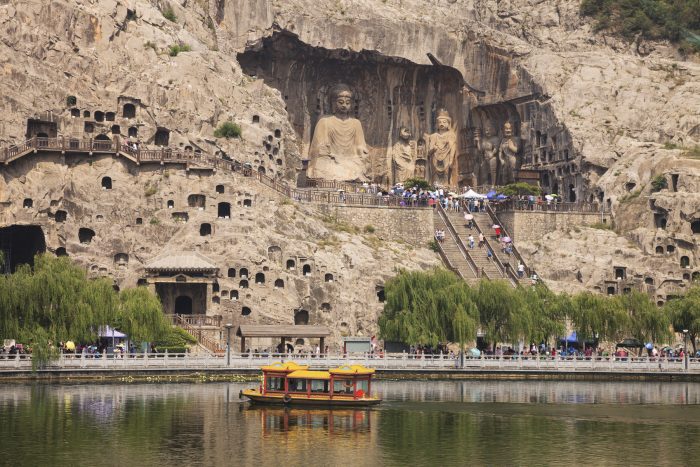
The Longmen Grottoes, also known as the Longmen Caves, are one of the best examples of Chinese Buddhist art. The UNESCO World Heritage Site has over 2,300 caves which contain over 100,000 statues of Buddha and his disciples; these statues range from just 25 millimeters to over 17 meters in height. There are also 2,800 inscriptions carved on steles and over 60 stupas. The carvings were made between the end of the 5th century and the mid-8th century.
The Longmen National Park are located near Luoyang, which is one of the oldest imperial capital cities of China. Luoyang is about 1 ½ to two hours by high-speed train from Xi’an, home of the Terracotta Army, and about four hours by high-speed train from Beijing.
Ayutthaya - Ayutthaya, Thailand
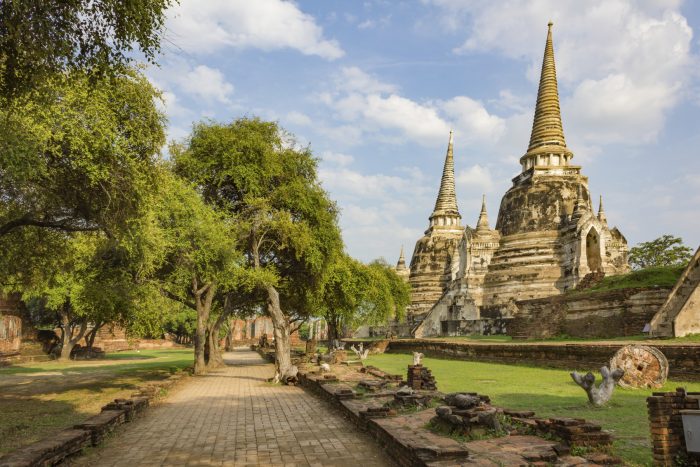
From 1350 to 1767, Ayutthaya was the capital of Siam, which at one time ruled an area as big as France and England combined. Towards the end of the empire, Ayutthaya’s population was a staggering one million people, making it the largest city in the world at the time. The only buildings that remain from this once impressive city are a few dozen stone temples and palaces.
Many of the sites have been partially restored, allowing visitors to get a glimpse of how they might have looked hundreds of years ago. The largest of Ayutthaya’s temples is Wat Phra Si Sanphet, known for its row of three chedis, or Thai-style stupas. Another popular temple is Wat Ratchaburana, known for its beautiful prang, or spire, that was recently restored to its original condition.
Ayutthaya is a popular and easy day trip from Bangkok; however, consider making it a two-day trip. This enables you to spend more time at the ruins and see them lit up at night, as well.
Temples of Angkor - Siem Reap, Cambodia
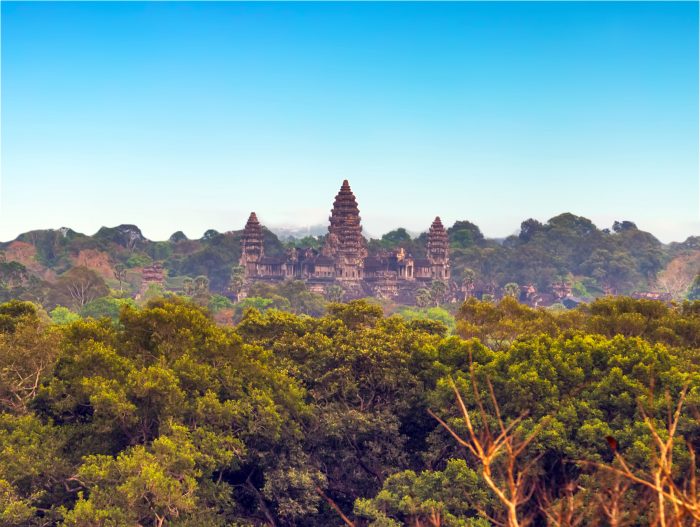
No article on ancient ruins in Asia is complete without this one. The temples of Angkor in Siem Reap, Cambodia are simply some of the most beautiful and extraordinary ruins in the world.
The crown jewel of the Angkor temples is Angkor Wat. Built in the 12th century, this monument was designed to be the earthly representation of Mt. Meru, the most important mountain of the ancient Hindu faith. Angkor Wat is the largest religious monument in the world, and both the scale of the temple and the details are awe-inspiring. An incredibly intricate 800-meter-long bas relief—the longest in the world—adorns the outer wall. There are also over 3,000 apsaras, or divine nymphs, carved into the temple’s walls, and each apsara is unique.
While Angkor is the grandest and the best-known of the Angkor temples, you certainly shouldn’t miss the others, especially Bayon, Preah Khan, Banteay Srei, and Ta Prohm.
Prambanan - Central Java, Indonesia
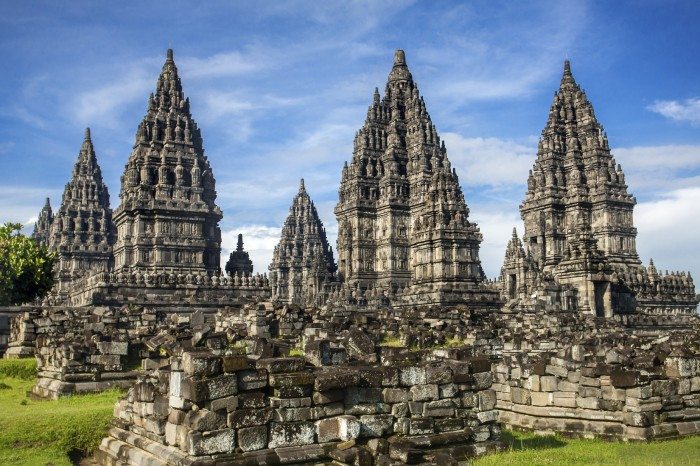
Yogyakarta, Indonesia is lucky to be home to two of the most impressive ancient ruins in Asia. Prambanan is a massive and spectacular complex of Hindu temples located in Central Java, Indonesia, not far from Yogyakarta and the Borobudur temple. Built between the 8th and 10th centuries, Prambanan is the best surviving example of Hindu cultural period in Java. In 1991, Prambanan was named a UNESCO World Heritage Site.
There were originally 240 temples but many have deteriorated; the main attractions now are the six temples of the central court. All six are covered in intricate carved reliefs. At 47 meters high, Candi Siva is the tallest of these six temples; it’s dedicated to Shiva. Another popular temple is Candi Lara (Loro) Jonggrang, or Candi Prambanan, located just left of the main entrance.

